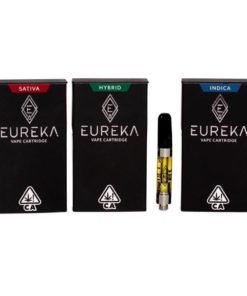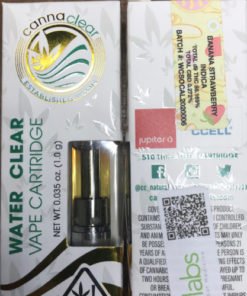Unveiling the Hidden Dangers of Vape Pen Lung Disease
Summary – 1 Minute Read.
The rise of vape pen lung disease has raised concerns about the safety of cannabis vaping products, particularly due to the misuse of untested additives like vitamin E acetate. This issue highlights the importance of consumers being informed about product contents and purchasing from reputable sources, while also emphasizing the need for regulatory bodies to enhance oversight on vape product ingredients. Consumers are advised to opt for brands that prioritize purity and transparency to ensure safety. Overall, vigilance regarding product safety is essential as regulatory measures strive to catch up with industry practices.
Unveiling the Hidden Dangers of Vape Pen Lung Disease
The rise of vape pen lung disease has sparked significant concern and scrutiny within the cannabis community, especially as insiders turn their attention to the potential misuse of new additives. This issue is particularly pressing as it pertains to the safety and health of consumers who rely on these products for both recreational and medicinal purposes.
In recent years, vaping has become a popular method for consuming cannabis due to its convenience and perceived health benefits over smoking. However, with this popularity comes an increased risk of exposure to harmful substances when improper additives are used. The problem often arises when manufacturers introduce new ingredients that haven’t been thoroughly tested or regulated. These additives can sometimes lead to adverse health effects, including the notorious “vape pen lung disease.”
Important Reminder:
As we navigate these challenges, it’s crucial for consumers to stay informed about what they’re inhaling. Always ensure your products come from reputable sources.
One of the primary concerns is that some producers may be using vitamin E acetate and other cutting agents in their vape cartridges. While these substances might help reduce costs or enhance flavor profiles, they can also pose serious risks when inhaled. The Centers for Disease Control and Prevention (CDC) has identified vitamin E acetate as a likely culprit in many cases of lung injury associated with vaping.
Given this context, it’s vital for consumers to demand transparency from manufacturers regarding the contents of their vape products. At the same time, regulatory bodies need to step up efforts in monitoring and controlling what’s being added into these products before they hit the market.
For those seeking alternatives or wanting assurance in their purchases, consider exploring options like Shop Quality THCa. Products that prioritize purity and transparency offer a safer choice amidst growing concerns over additive misuse.
As we move forward, staying vigilant about product safety is essential. Consumers should always check labels carefully and opt for brands committed to quality control processes. It’s not just about enjoying a good experience—it’s about safeguarding one’s health against unforeseen dangers lurking in unregulated additives.
In conclusion, while vaping remains a popular choice among cannabis users, awareness around potential risks associated with new additives must remain high on everyone’s agenda—particularly during times when regulatory measures are still catching up with industry practices.
Frequently Asked Questions (FAQs):
Q: What is vape pen lung disease?
A: A lung condition linked to harmful vape additives.
Q: Why are new additives in vapes concerning?
A: They may pose untested health risks.
Q: What substance is linked to vaping lung injuries?
A: Vitamin E acetate.
Q: How can consumers ensure product safety?
A: Buy from reputable sources and check labels.
Q: What should regulatory bodies do about vape products?
A: Monitor and control additive use.
Q: Why has vaping become popular for cannabis users?
A: It’s convenient with perceived health benefits over smoking.
Helpful Links:
-
Centers for Disease Control and Prevention (CDC): The CDC provides detailed information on the health risks associated with vaping, including the role of vitamin E acetate in lung injuries.
-
National Institute on Drug Abuse (NIDA): NIDA offers insights into the impact of vaping on health and the challenges posed by unregulated additives in vape products.
-
Food and Drug Administration (FDA): The FDA discusses regulatory efforts to ensure the safety of vaping products and addresses concerns about harmful ingredients.
-
American Lung Association: This resource highlights the potential dangers of e-cigarettes to lung health and emphasizes consumer awareness regarding product contents.
-
Scientific American: A comprehensive article exploring the rise of vaping-related lung diseases, focusing on recent research findings and industry responses.
Definition:
Vape Pen: A device used to vaporize substances for inhalation, often containing nicotine or THC.
Lung Disease: Any disorder affecting the lungs that can impair respiratory function.









It’s crucial for consumers to prioritize safety by choosing cannabis vape products from reputable sources. The rise of vape pen lung disease underscores the need for transparency and regulation in the industry. Always check labels and be aware of harmful additives like vitamin E acetate to protect your health.